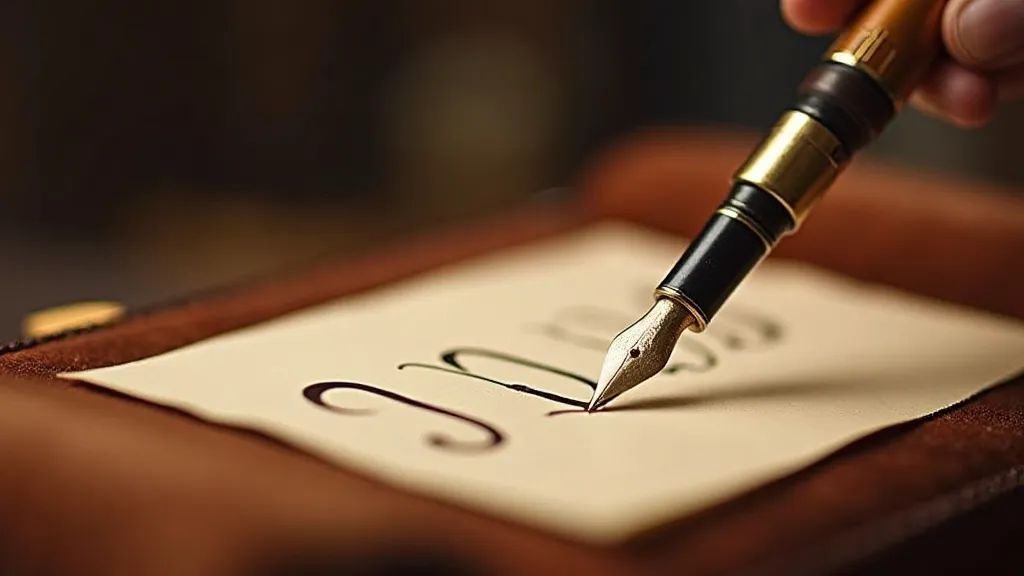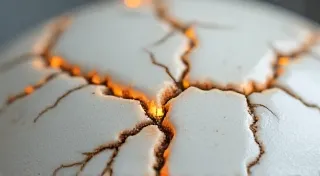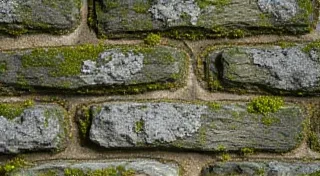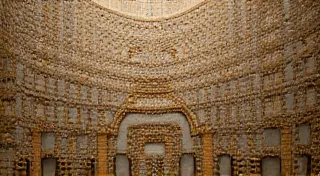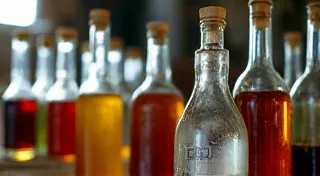The Echo of Ink: Resurrecting Voices in Antique Calligraphy Pens
There's a certain magic that hums from antique objects, a quiet resonance of past lives and stories whispered through time. Among these, antique calligraphy pens hold a particularly poignant charm. They are not merely tools; they are vessels, crafted with intention and skill, holding within them the echoes of countless words, signatures, and artistic flourishes. As a specialist in calligraphy pen restoration, I'm often asked, “Why restore?” My answer isn't about vanity or collecting; it’s about stewardship, about ensuring these voices, these histories, aren't silenced by neglect.
My journey into pen restoration began with a battered Conway Stewart, found in a dusty attic box. It was a mess – the nib bent, the sac brittle, the lever filler mechanism seized. It felt like a puzzle, a challenge. But more than that, it felt like a duty. I knew, somehow, that this pen had a story to tell, and I felt compelled to help it tell it.
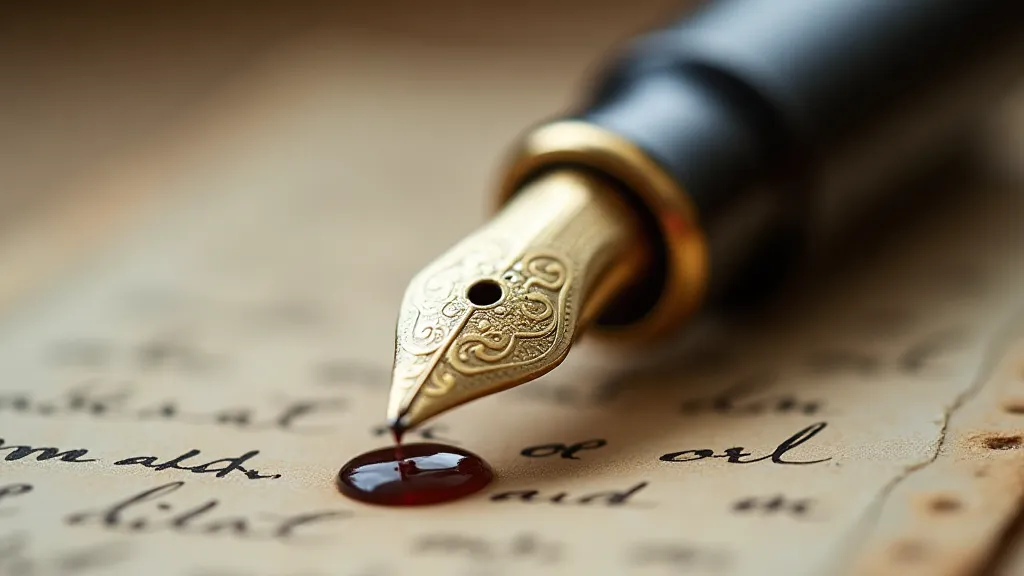
A Glimpse into the Past: The Significance of Antique Calligraphy Pens
The history of calligraphy pens is deeply interwoven with the evolution of communication and artistry. Before the ubiquity of typewriters and digital fonts, these pens were the primary instruments of record-keeping, correspondence, and creative expression. Imagine the meticulous hand of a scribe carefully copying manuscripts, the flourish of a merchant signing contracts, or the elegant strokes of a poet crafting verses. Each pen was a facilitator of momentous events, personal joys, and shared knowledge. Understanding the journey these pens took over time is a fascinating pursuit— sometimes, documenting a pen’s history feels like piecing together the silent scribe who once wielded it.
Early examples, dating back centuries, were simple quill pens crafted from feathers. While functional, they lacked the refinement and longevity of later metal pens. The 19th century saw a revolution with the introduction of steel and, more luxuriously, gold nibs. Manufacturers like Waterman, Conway Stewart, Parker, and Mabie Todd & Co. became household names, renowned for their craftsmanship and innovative designs. These weren't mass-produced items; each pen represented a significant investment, a symbol of status and refinement.
The designs themselves tell a story. The elaborate filigree of a Waterman, the sturdy build of a Conway Stewart, the distinctive clip of a Parker – each design element reflected both aesthetic preferences and the engineering prowess of the era. Understanding these details is crucial, not only for appreciating the pen's beauty but also for guiding the restoration process. Knowing the manufacturer and approximate age can inform the original materials and construction techniques, avoiding irreversible damage during repair. The process often involves more than just mechanical fixes; it’s about recognizing the emotional connection to a piece of history.
The Delicate Art of Restoration: A Step-by-Step Overview
Restoring an antique calligraphy pen is not about returning it to a pristine, factory-fresh state. It's about stabilizing its condition, correcting functional issues, and preserving its character. Overzealous cleaning or aggressive repairs can erase the patina of age, diminishing its historical significance. The goal is to enhance, not to fabricate. Often, it’s about recognizing the stories ingrained within the materials, and appreciating that imperfection tells a tale.
The process generally involves several stages:
- Assessment: A thorough examination is the first step. This involves identifying the manufacturer, model, materials, and extent of damage. Are there cracks in the barrel? Is the nib bent or misaligned? Is the sac leaking? This informs the approach.
- Cleaning: This is often the most challenging aspect. Dried ink, shellac, and other residues can obscure the pen’s original finish. Gentle solvents, such as isopropyl alcohol or specialized pen cleaning solutions, are used sparingly. Stubborn ink can be removed with ultrasonic cleaning, but this must be done with caution, especially on early plastic pens which can become brittle.
- Nib Adjustment: A bent or misaligned nib can render the pen unwriteable. This requires specialized tools and a delicate touch. The nib's tines (the “teeth” of the nib) must be brought back into perfect alignment to ensure a smooth and consistent ink flow. This is arguably the most demanding part of the process and requires years of experience to master.
- Sac Replacement: The sac, which holds the ink, is often the first component to fail. Replacing it with a compatible material (typically rubber or ebonite) is essential for a leak-free writing experience.
- Barrel Repair: Cracked or damaged barrels require careful repair. Cracks in early plastics (bakelite or celluloid) are often repaired with specialized adhesives, while metal barrels may require soldering or other metalworking techniques. Sometimes, repurposing broken components—reimagining them from ashes to art— offers a unique and sustainable restoration path.
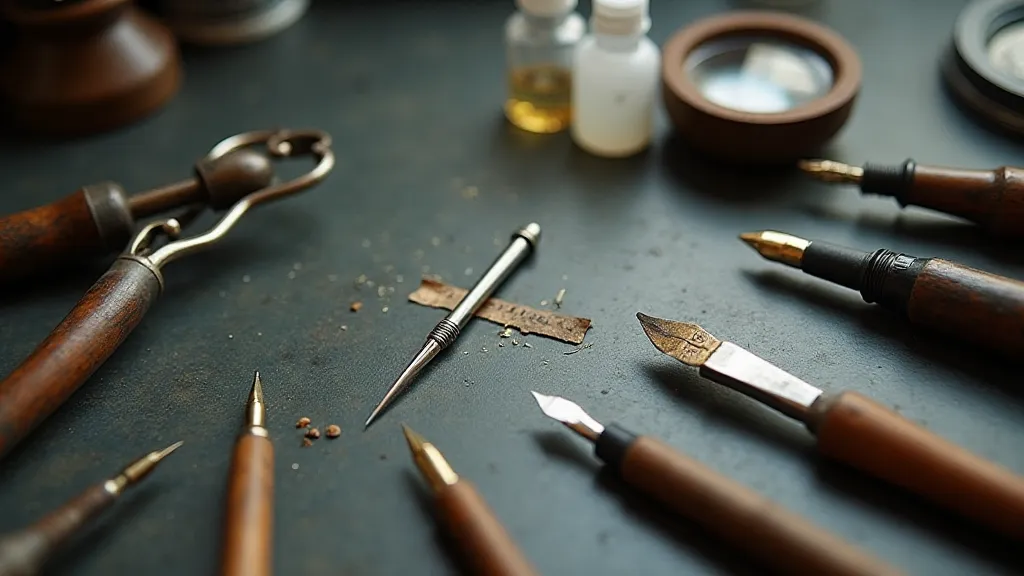
Preserving the Echo: Beyond the Mechanical
Restoration is more than just a technical exercise; it's a form of preservation. Each pen carries a history, a narrative etched into its metal and plastic. Understanding that history, even in a rudimentary way, informs the restoration process. A tiny scratch might represent a moment of haste; a faded inscription might reveal a forgotten romance. These are the details that breathe life back into an antique object. The skill involved isn't just about repair; it's about unlocking a story.
Consider the Conway Stewart I restored initially. After cleaning and nib adjustment, the pen wrote beautifully. But it was more than just a functional pen; it was a connection to the past. I researched its likely period of manufacture and imagined the hand that had last held it. That's when the real reward of restoration comes – not just in a pen that writes again, but in a story that is remembered. The process itself can be complex, demanding a deep understanding of the materials and techniques of a bygone era, much like unlocking secrets within a seemingly inanimate object.
The Collector's Perspective: Beyond Functionality
While functionality is important, collectors often prioritize originality and historical accuracy. Replacing a lever filler with a cartridge system might restore writing capability, but it would diminish the pen’s value and authenticity. Preserving as many original parts as possible is crucial for maintaining its historical significance. Documenting the restoration process, including photographs and detailed notes, is also a valuable practice, allowing future generations to understand the work that has been done and appreciate the pen’s journey through time. Beyond the mechanics, true restoration honors the spirit of the original craftsman, recognizing the artistic legacy embedded within each pen. It's about more than just fixing a problem; it's about respecting a heritage.
The challenge often extends to finding replacement parts that are both compatible and period-appropriate. A modern rubber sac might function perfectly, but it lacks the character and feel of an original ebonite sac. Seeking out original parts often leads to a treasure hunt, connecting restorers with other collectors and enthusiasts who share a passion for preserving these historical artifacts. This collaborative effort fosters a sense of community, further enriching the restoration experience.
Ultimately, the echo of ink in an antique calligraphy pen represents a link to the past. By embracing the art of restoration, we can ensure that these voices continue to be heard, enriching our understanding of history, craftsmanship, and the enduring power of the written word. It's a responsibility we take seriously, striving to not just repair the pen, but to honor its story.
